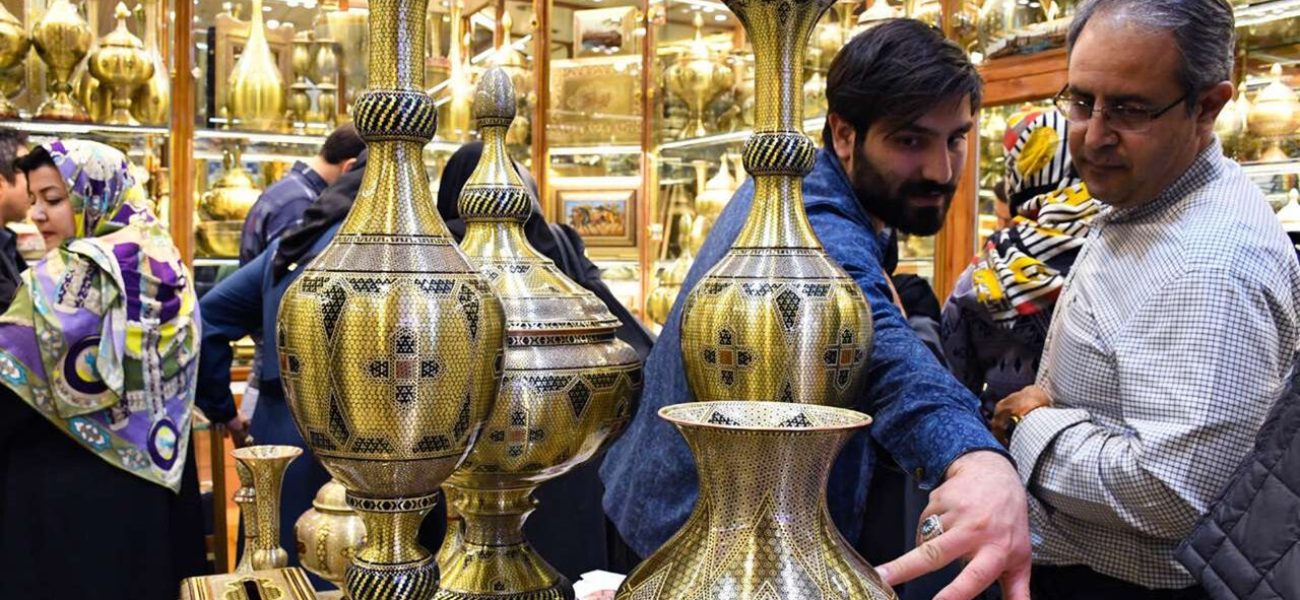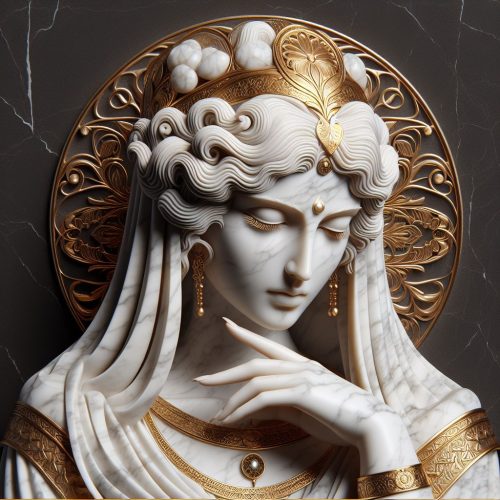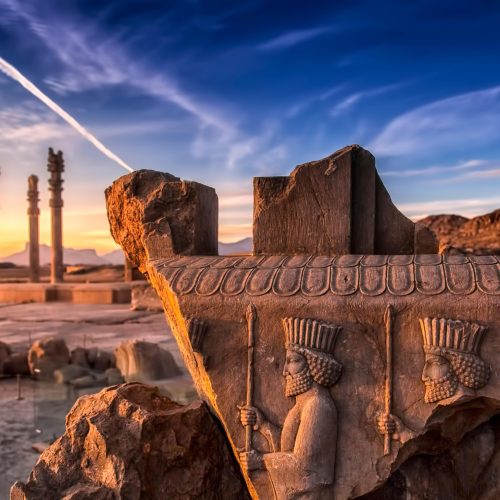By Dr. Mehrdad Farrokh, Cultural Heritage Research Institute, Tehran
In the delicate landscape of Persian decorative arts, where each brushstroke and carved line carries the whispers of centuries, Khatam stands as a profound testament to human creativity, patience, and spiritual geometry. This exquisite art form is not merely a craft, but a philosophical dialogue between material and metaphysical realms, where mathematics meets mysticism, and where every tiny piece tells a story of cultural resilience and artistic transcendence.
The Poetic Geometry of Khatam
Khatam is not merely an art form; it is a cosmological language written in the grammar of geometric precision. Imagine geometry not as a cold mathematical construct, but as a living, breathing entity that captures the very essence of universal order. In the hands of Iranian artisans, geometry transforms into a mystical script, where each angle, each intersection, each carefully aligned fragment becomes a verse in an epic poem of visual harmony.
The Metaphysics of Geometric Patterns
The geometric patterns of Khatam are far more than decorative elements – they are philosophical propositions, visual koans that invite contemplation. Each six-pointed star is a meditation on connectivity, each intricate zigzag a reflection of life’s complex trajectories. These are not random designs, but carefully constructed cosmological maps that echo the Sufi concept of wahdat (unity), where multiplicity emerges from a singular source.
Consider the complexity of a typical Khatam pattern: hundreds of tiny pieces, each cut with microscopic precision, coming together to create a whole that is infinitely more profound than its constituent parts. This is not just craftsmanship; this is a metaphor for human existence – individual fragments finding meaning through connection, through harmony.
The triangular and hexagonal shapes prevalent in Khatam are not arbitrary. They echo the fundamental geometric structures found in nature – in honeycomb cells, in crystal formations, in the intricate designs of molecular structures. An Iranian artisan working on a Khatam piece is not just creating an object, but revealing the hidden mathematical poetry that underlies reality itself.
Symbolic Dimensions of Geometric Language
In Persian philosophical and mystical traditions, geometry has always been more than a mathematical discipline. It is a spiritual practice, a method of understanding divine order. The great philosophers and mathematicians of Islamic Golden Age – polymaths like Omar Khayyam and Al-Biruni – understood geometry as a path to understanding cosmic principles.
Khatam embodies this tradition. Each pattern is a sophisticated dialogue between visible and invisible worlds. The symmetry represents balance, the repetitive patterns suggest infinity, and the intricate intersections symbolize the complex relationships that bind the universe together. When light plays across a Khatam surface, it doesn’t just illuminate – it creates a dynamic narrative of reflection and interconnection.
The Mathematical Soul of Artistic Expression
The mathematics behind Khatam is breathtaking in its complexity. Artisans must understand principles of tessellation, symmetry, and geometric progression at an intuitive level. They work not with rulers and compasses alone, but with an almost mystical understanding of how shapes can interlock, repeat, and transform.
A single Khatam panel might incorporate dozens of different geometric transformations. Rotational symmetry, reflectional symmetry, translational symmetry – these are not just technical terms, but the vocabulary of a profound artistic language. Each piece is a complex equation solved through patience, skill, and an almost meditative concentration.
Emotional Geometry: Beyond Visual Perception
What makes Khatam truly extraordinary is how it transcends visual perception to become an emotional experience. When one touches a Khatam surface, one doesn’t just feel wood or metal – one feels the accumulated wisdom of generations, the subtle vibrations of mathematical harmony, the delicate balance between structure and creativity.
The geometric patterns seem to pulse with an inner life. They are not static; they create optical illusions, subtle movements that suggest motion within stillness. A Khatam piece is never truly fixed – it changes with light, with perspective, with the emotional state of the observer.
In this way, Khatam becomes more than an art form. It is a profound philosophical instrument, a method of understanding complexity, a visual representation of the intricate, interconnected nature of existence itself.
Design and Construction: A Meditative Journey
The creation of Khatam is less a craft and more a form of spiritual meditation. Each piece begins with a vision, a geometric dream that will slowly materialize through immense patience and profound skill. The artisan starts by selecting materials with almost ritualistic care – woods like ebony, walnut, and rosewood; metals such as brass and copper; bones from camels or cattle; and occasionally, mother-of-pearl that captures light like frozen moonbeams.
The process is a delicate choreography of preparation. Thin triangular or rectangular rods are cut with microscopic precision, then bundled and heated to fuse them into complex geometric shapes. These bundled rods are then sliced into thin segments, revealing intricate patterns within – much like cutting into the heart of a geode reveals its hidden crystalline beauty.
A master Khatam artisan might spend weeks or even months preparing a single decorative panel. The rods are arranged in mesmerizing patterns – six-pointed stars, eight-pointed stars, intricate zigzags, and complex interlocking designs that seem to pulse with an inner mathematical rhythm. Each segment is then carefully inlaid into a wooden base, creating surfaces that shimmer with geometric complexity.
Historical Resonance and Artistic Evolution
The roots of Khatam can be traced back to the rich artistic traditions of the Persian Empire, with significant developments during the Safavid era (1501-1736). During this golden period of Iranian arts, Khatam became more than a decorative technique – it was a symbolic language, a way of expressing cosmic order and divine symmetry.
In the workshops of Isfahan and Shiraz, master artisans developed increasingly sophisticated techniques. They weren’t just creating objects; they were composing visual poetry, where each geometric pattern represented a metaphysical concept. The six-pointed star, for instance, was not just a mathematical construct but a representation of harmony between earthly and celestial realms.
Examples of Khatam: Narrative Objects of Beauty
Royal Treasures and Diplomatic Gifts
Some of the most extraordinary examples of Khatam can be found in museums and royal collections worldwide. The magnificent writing desk created for Naser al-Din Shah Qajar, now preserved in the Golestan Palace in Tehran, represents the pinnacle of this art form. Covered in intricate Khatam patterns, with over 50 different types of wood and metal used, it is less a piece of furniture and more a three-dimensional manuscript of Iranian artistic philosophy.
Another remarkable example is the collection of Khatam boxes in the Victoria and Albert Museum in London – diplomatic gifts that carried within their geometric patterns the silent conversations of empires, each inlay a coded message of cultural sophistication.
Contemporary Interpretations
Modern Iranian artists have continued to evolve Khatam, transforming it from a traditional craft to a dynamic contemporary art form. Young designers are now experimenting with new materials, creating Khatam pieces that speak to current global aesthetics while maintaining deep connections to historical techniques.
Current Status: Preservation and Renaissance
The story of Khatam in the contemporary world is one of both challenge and hope. Globalization and rapid technological changes threaten traditional crafts, yet there is a growing recognition of Khatam’s profound cultural significance.
Educational institutions in Iran are now developing specialized programs to preserve and promote this art. The Tehran University of Art and the Traditional Arts Research Center have established dedicated workshops and research programs focused on Khatam, ensuring that this intricate art form continues to live and breathe.
International recognition has also been crucial. UNESCO’s acknowledgment of Khatam as an Intangible Cultural Heritage has provided crucial support for its preservation. Iranian cultural centers worldwide now host exhibitions and workshops, introducing global audiences to this mesmerizing art form.
Economic and Cultural Implications
Beyond its artistic value, Khatam represents a significant economic asset for Iranian artisan communities. Hundreds of families in cities like Isfahan and Shiraz continue to practice this art, with global markets showing increasing interest in authentic, hand-crafted Khatam pieces.
Conclusion: A Continuing Dialogue
Khatam is more than an art form – it is a philosophical statement, a continuous dialogue between tradition and innovation, between the seen and unseen worlds. Each piece carries within it centuries of cultural memory, mathematical precision, and spiritual aspiration.
As we move further into the 21st century, Khatam reminds us that true art transcends mere decoration. It is a way of understanding the world, of finding beauty in complexity, and of maintaining a delicate balance between order and creativity.
In every tiny, precisely cut piece of wood or metal, in every carefully arranged geometric pattern, Khatam whispers an ancient truth: that beauty is found not in simplicity, but in the intricate, interconnected dance of seemingly disparate elements.
Dr. Mehrdad Farrokh is a senior researcher at the Cultural Heritage Research Institute in Tehran, specializing in Persian decorative arts and cultural semiotics.




